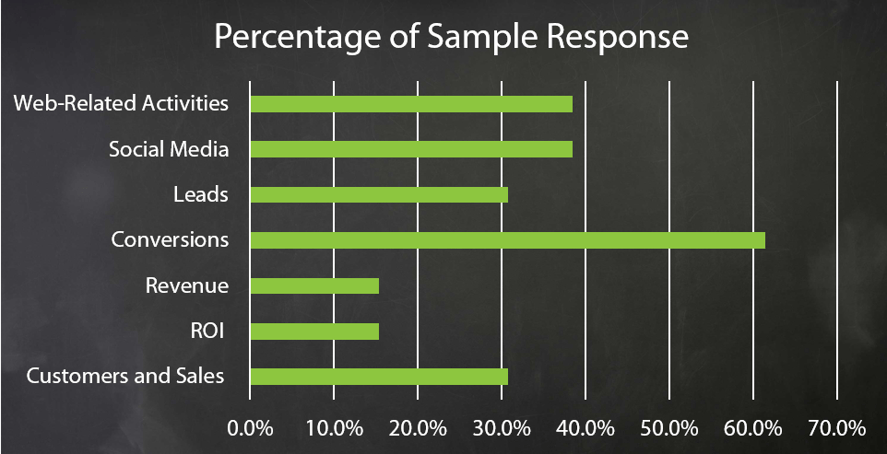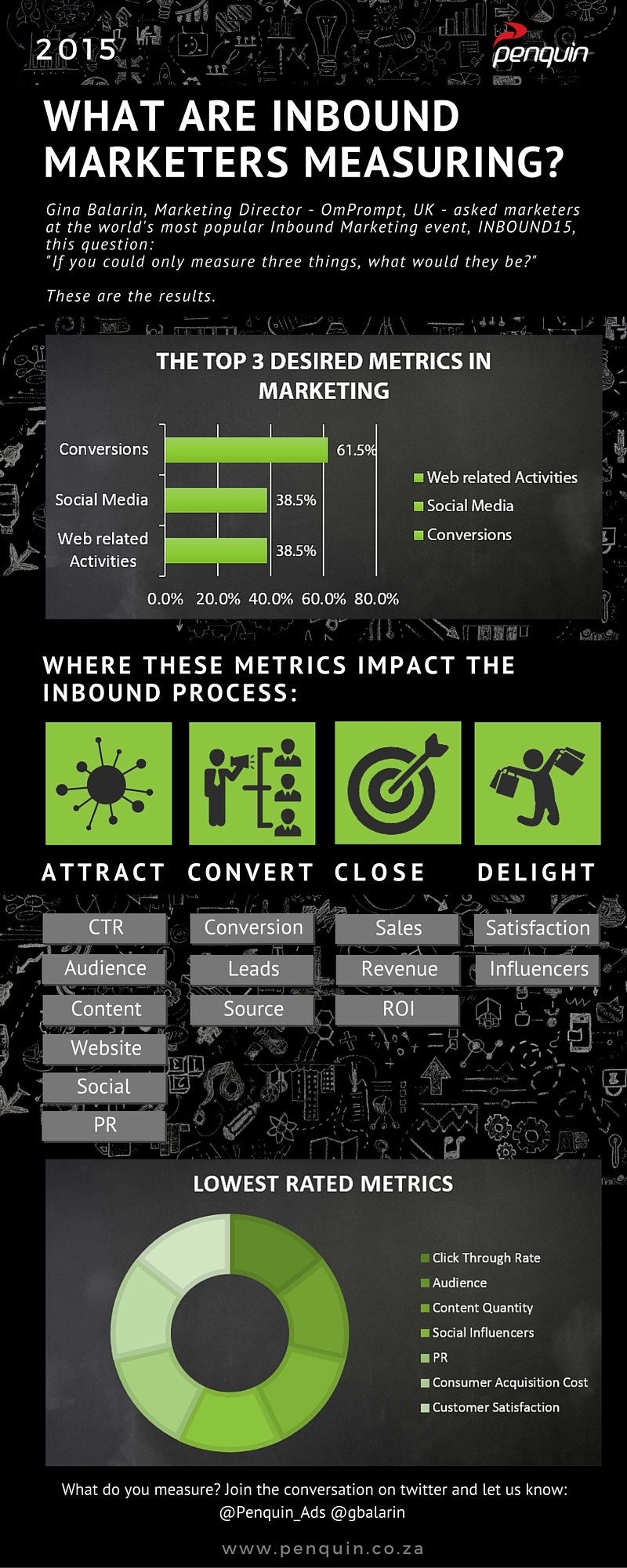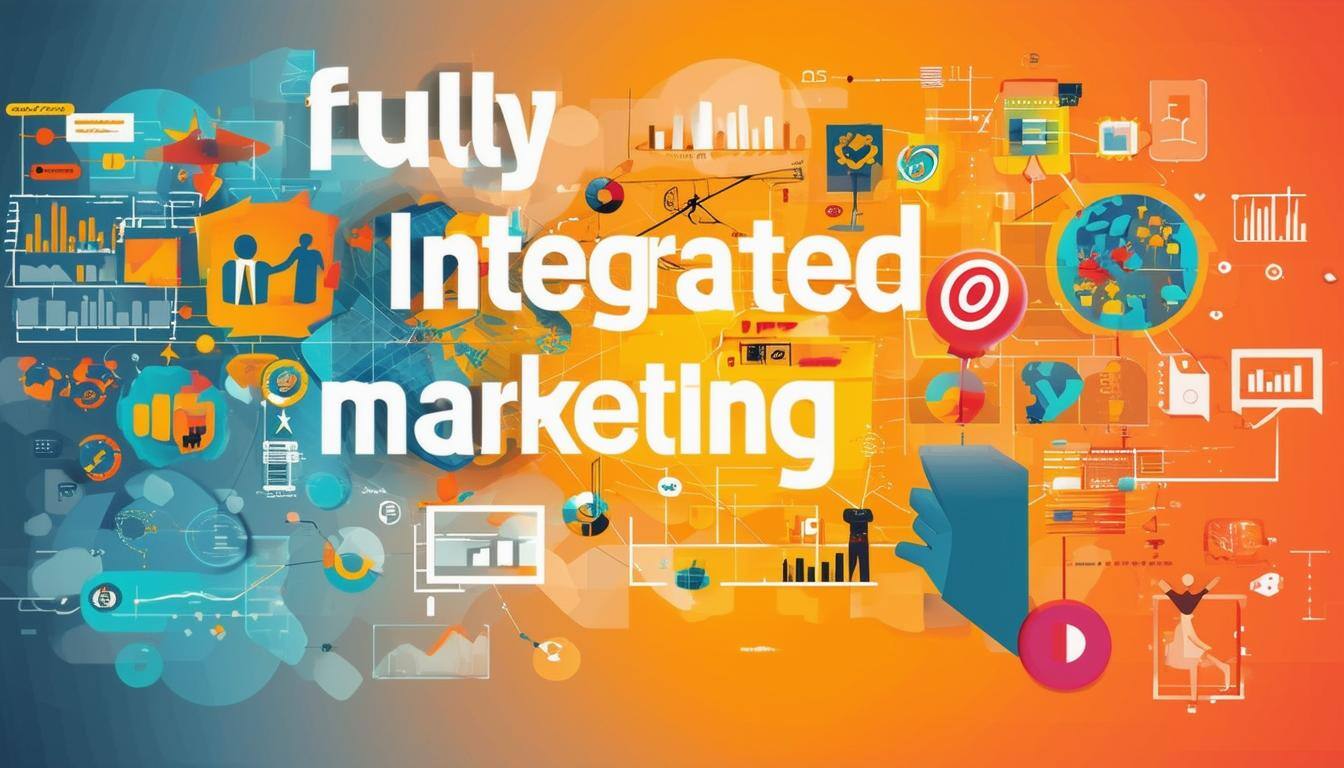Guest Post: Gina Balarin, Marketing Director – OmPrompt, UK
The HubSpot Inbound event, Inbound15, that took place last month in Boston, USA, was nothing short of amazing. But I had my own ‘hidden agenda’ while there. I tried to chat to as many marketers as possible to ask them this one simple question: “If you could only measure three things – what would they be?”
One of the greatest things about connecting with people to ask them these questions, however, (and one of the great benefits of the Inbound conference) is that it builds common ground between marketers. And that’s why Alison Leishman from Penquin, a marketing agency in South Africa and I are collaborating on this blog post.
If you could only measure three things – what would they be?
The answers were varied, often reflecting the specific nature of their work (marketing is, believe it or not, an amazingly diverse discipline), whether they are client-side or agency-side, or they’re focused on non-profits, B2B or B2C, and – invariably – how senior they were within the organisation.
The thing that surprised me, however, is that there almost seemed to be two types of marketers:
- Those focused on results above all else (and they tended to talk about conversions in terms of sales or revenue)
- Those focused on bringing people to the business (but not necessarily converting them to sales).
So what were the actual responses?
In summary, based on the responses from 15 of my fellow Inbound marketers, they are focused on seven key measurement categories.

That’s all very well - but when they use terms like ‘conversions’ or ‘web-related activities’, what do they actually mean?
- Those measuring web-related activities covered metrics including: SEO, bounce rate, organic reach as well as visits to the site. Why? So they could understand what makes people convert on the site.
- Those measuring social media metrics focused on social media engagement and the actual benefits of social media to their business.
- When discussing leads and conversions, it got really interesting. Not only do marketers want to know how many leads they have, they also want to know how their leads became leads. What was their path to conversion? Which marketing activities drove them to convert? And how could they use this understanding to nurture leads? My discussions revealed that, not only do marketers want to know about new leads, but they also want to better understand the “dead” leads – who they are and why they have stopped engaging.
- They also wanted to look at the impact and power of social influencers, get an understanding of how well cost-per-click advertising was working (relative to their online campaigns), measuring PR activities, and how to find out more about target audience demographics and affinities.
What does this have to do with an Inbound methodology?
There’s no question that the results are interesting: but what does it all mean for Inbound marketing, Inbound processes, and methodologies?

The real question is: who is responsible for Inbound marketing? And where does that responsibility end?
Sure, marketers need to fill the top of the funnel: but how far down the sales/marketing funnel are marketers responsible? And how far should we be responsible? Are marketers responsible for the entire inbound process? Who defines the marketing metrics - best practice, trends, KPIs, the team themselves or the client?
These questions shouldn’t be keeping marketers up at night – but they are certainly food for thought.
What is clear though, is that metrics are more important than ever before – and so is the emphasis on helping the business close deals. In fact, to me it’s clear that the line between sales and marketing is not just blurring – it’s totally blurred. It’s like trying to read a novel through a glass of milk – completely opaque.
Once upon a time, sales and marketing had different jobs. Marketers marketed. Sales-people sold. I can’t help spotting the irony: now, marketers focus on ROI, conversions, leads and close rates – and sales-people focus on social media, social selling, target audiences, campaigns, email and engagement.
It’s a strange old world we live in, and Inbound marketing is turning the sales funnel on its head. The only question is: are you an Inbound marketer? We’d love to know.
Join the conversation on Twitter by tagging @GBalarin and @PenquinAds.




SUBMIT YOUR COMMENT